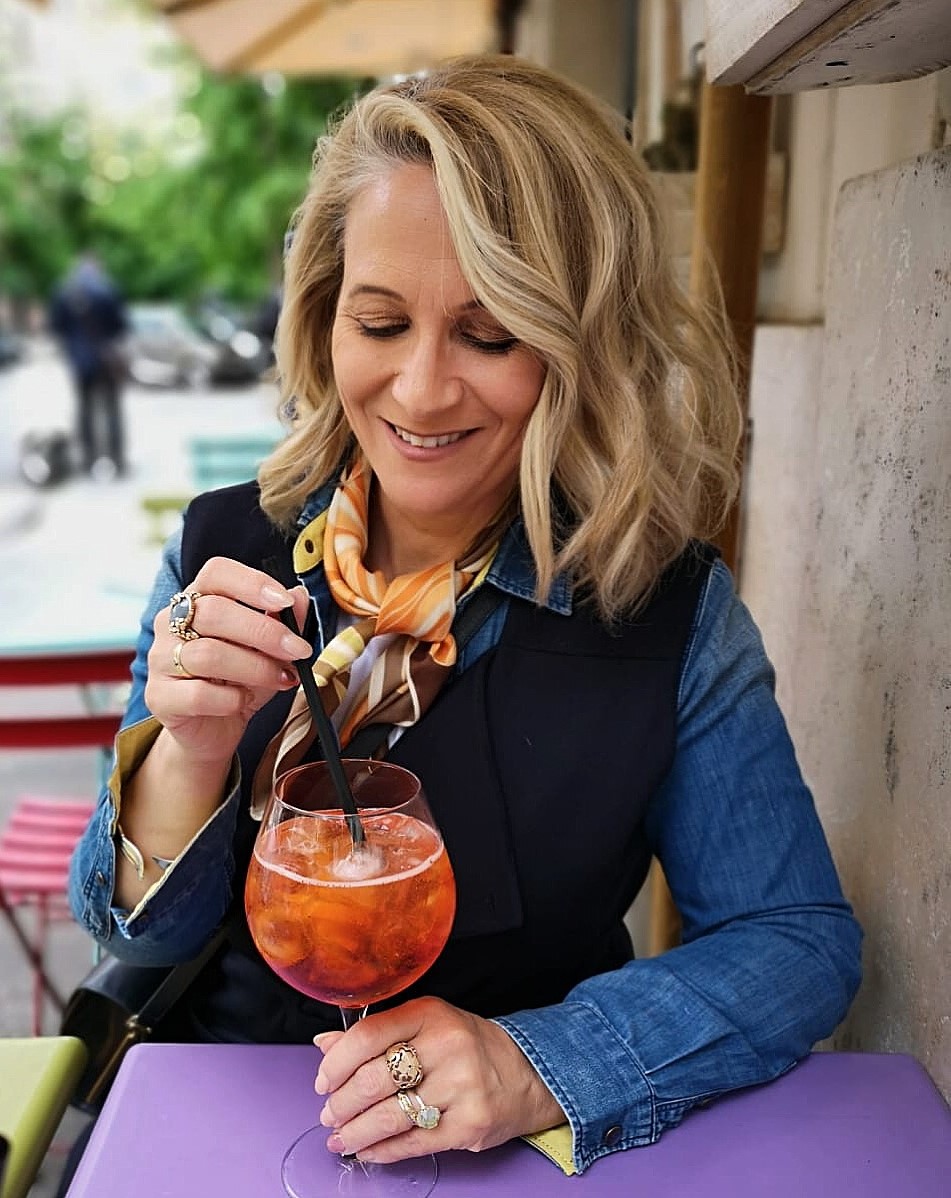
While you may have had Oxtail Stew before, if you haven’t tried this classic Roman recipe you really are missing out. I love slow cooked meats and this is one recipe that is well worth the wait. You will either buy beef or veal ‘tails’, and the butcher will cut it into pieces for you. One of the reasons I love this dish is because it actually makes two classic Roman recipes. You can eat the ‘oxtail’ by itself, accompanied by roast potatos, polenta or rice… then the next day with the leftovers, you can create a wonderful pasta sauce to accompany a short pasta such as rigatoni. After slow cooking for a few hours, the meat should fall away from the bones. This is a very rich and flavourful sauce for any pasta. I like to cook more oxtail than I actually need to stretch this recipe over 2 or 3 meals. While many recipes will tell you to cook this in a saucepan on the stovetop, I find it better to start it off on the stovetop, but finish the slow cook in the oven in my cast iron Le Creuset saucepan.
Coda alla Vaccinara
- 1kg Oxtail

- 1 cup flour
- Olive Oil
- 1 large onion
- 2 medium carrots
- 16 ribs celery
- 10 cloves
- 1 small fresh red chilli pepper, chopped finely
- salt
- freshly cracked balck pepper
- 50g guanciale (cured pork jowl) cubed
- 250ml white wine
- 1 can tomato ‘polpa’
- 1/4 cup currants (or a handful)
- 500ml -750ml vegetable or beef stock
- 1 tablespoon dark cocoa or 30g grated dark chocolate
- 2 tablespoons lightly toasted pine nuts
- lemon zest
- Chop carrot, onion and half of the celery and cook over a low heat with a splash of Olive Oil in a frying pan, until onion is translucent.
- Rinse oxtail under cold water and dry well with absorbent kitchen paper. Lightly flour all oxtail pieces with seasoned flour. Add Olive Oil and guanciale to a heavy cast iron saucepan and brown oxtail all over. Remove oxtail from saucepan.
- Transfer carrot, onion and celery from frying pan into the cast iron saucepan with the guanciale, and add cloves. Scrape the bottom of the saucepan with a wooden spoon and stir well. Add white wine, increase heat and allow to simmer for about 10 minutes.
- Add tomato polpa, and chilli pepper and stir well. Return oxtail to saucepan and add enough stock to cover them.
- Add half the currants, stir. Cover saucepan with lid, and place in an oven preheated to 160°C. Cook for two hours.
- After two hours, check sauce is still liquid, and covering oxtail, and then continue to cook in oven for another hour. (Add more stock if sauce and meat seems dry).
- Meanwhile, chop the remaining celery roughly and cook until soft in a small amount of salted water. Pureè in a food processor. Add cocoa, the remaining currants and a little of the oxtail sauce into the celery mixture. Return to a medium heat in a small saucepan and allow to cook for a few minutes. Stir this through the Oxtail Stew after the stew comes out of the oven and allow to rest for at least a half hour before serving.
- Serve and sprinkle delicately with freshly grated lemon zest and pine nuts.
Use any leftover sauce for a rich pasta sauce the following day!

Coda alla Vaccinara
- 1 kg di coda di vitellone
- 200g farina
- Olio di oliva
- 1 cipolla grande
- 2 carote
- 10 coste di sedano
- 10 chiodi di garofano
- 1 piccolo peperoncino
- sale
- pepe
- 50g guanciale
- 250ml vino bianco
- 350g polpa di pomodori
- 3 cucchiai di uva passa
- 500ml – 750ml di brodo vegetale
- 1 cucchiaio di cacao amaro o 20g di cioccolato fondente, grattugiato
- 2 cucchiai di pinoli
- scorza di limone
- Tagliare a tocchetti la cipolla, le carote e 5 coste di sedano. Versare dell’olio di oliva in una padella e aggiungere la cipolla, le carote e il sedano, e i chiodi di garofano. Farli soffriggere a bassa fuoco, facendo in modo che non scuriscano troppo.
- Sciacquare i pezzi di coda di vitellone in acqua fredda e asciugarli fino a che non sono perfettamente asciutti. Quindi, infarinateli e fate una pre-rosolatura in olio di oliva dentro una pentola di ghisa che può andare in forno. Cuocere il guanciale nello stesso momento insieme alla coda. Togliere la coda dalla pentola e tenerli da parte.
- Aggiungere il soffrito nella pentola dove avete rosolato la coda, insieme al guanciale. Aggiungere il vino bianco e lasciar sfumare a fiamma media-alta per 5 – 10 minuti.
- Aggiungere la polpa di pomodoro, e unire di nuovo i pezzi di carne. Aggiungere il peperoncino, sale, pepe e abbastanza brodo per coprire bene tutta la coda. Aggiungere metà dell’uva passa. Girare con un mestolo tutto bene e trasferire la pentola, con il coperchio, dentro un forno pre-riscaldato a 160°C. Lasciarla cuocere per due ore.
- Dopo due ore, controllare che il contenuto sia sufficientemente liquido, altrimenti versarvi dell’ altro brodo. Continuare a cuocere per un altra ora, fino a che la carne non diventa morbida e non comincia a staccarsi dall’osso.
- Pulite il sedano rimanente, e tagliatelo in pezzi. Mettetelo a bollire in una pentola a parte con acqua e sale, e appena cotto, passatelo in un frullatore. Rimettetelo in una pentola e aggiungere il cacao amaro, un pò del sugo della coda e l’uva rimanente. Lasciatelo sul fornello a fuoco moderato per qualche minuto. A fine cottura della coda, versare sopra questa salsa e fatela amalgamare. Lasciate riposare almeno mezz’ora prima di servire.
- Spargere sopra ogni porzione i pinoli e una grattugiatina di scorza di limone.




